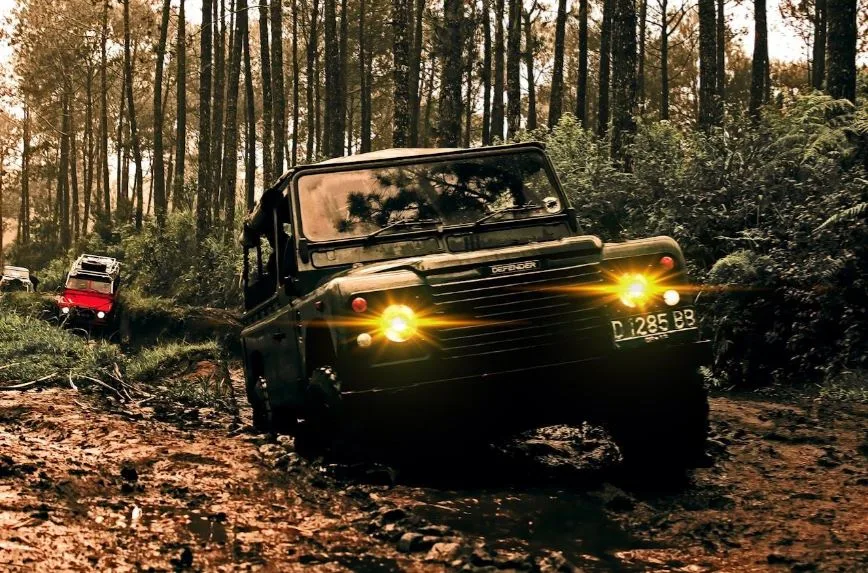Transform Your Jeep: The Power of a Lift Kit
When you decide to upgrade your Jeep to have a lift kit, the aesthetic is not all you get. It develops the clearance, strength, and body to navigate off-road conditions safely. Regardless of whether you are traversing forest roads or rough, vivid terrains, the application of the appropriate lift assists you in gearing your Jeep up to face the imminent difficulties ahead, besides optimizing the general performance, as well as flexibility on different types of terrain. But you shouldn’t fret since there is a clear method to accomplish it.
The Change Lift Kit will be on your Jeep
A lift kit will raise your Jeep and provide increased ground clearance and approach, breakover, and departure angles. The changes make you have easy time travel over rocks, mud, and jagged surfaces, and you will not end up breaking your undercarriage. Larger tires can also increase traction and stability when you add height. Also, the suspension lifts are more articulated, and the wheels move more freely on rough roads. Such an arrangement can minimize getting trapped or scraping on your car’s underside. Handling can potentially vary, too, depending on the kit, and this is why it is best to look at the impact on suspension geometry. All these mechanical modifications combine to form a more functional off-road vehicle without sacrificing core functionality.
The Different Lift kits available in Jeep Models
A number of lift kits are customized to various Jeep constructions and driving aspirations. Spacer kits provide a cheap and easy method of lifting your vehicle without making significant modifications to your suspension. Coil spring kits are the replacement kits of factory springs, and they tend to enhance the ride despite enhanced clearance. Short-arm and long-arm suspension kits add more complexity but increase control and tolerability when things get rough. Body lifts elevate the cabin off the frame with only a few suspension components disturbed. Choosing among the best Jeep lift kits depends on your needs. As an illustration, a trail-oriented driver can want a long-arm suspension kit, whereas a periodic adventurer may not need anything more than a slight coil spring improvement.
Considerations Prior to the Installation
Prior to fitting a lift kit, check the effect the changes would have on the handling, comfort, and mechanical systems of your Jeep. The fact is that lifting accelerates a change in the center of gravity, which may impact the behavior of the vehicle during turns or emergency brakes. It might need adjustments to braking, steering alignment, and suspension angle. Bigger tires also require additional room, so you will have to think about tire clearance and even fender trimming. Depending on the amount of lift, some upgrades may be present, including longer brake lines or control arms. Considering these factors before buying helps you avoid complications and make sure that the lift makes your Jeep more functional and not the source of new challenges.
Maintenance and Wear After Lifting
A raised Jeep will demand new maintenance procedures. The suspension parts can become overstressed more, particularly when driving on irregular terrain. Shock absorbers, ball joints, and track bars should be regularly checked to determine wear. Alignment must be observed to avoid tire problems and achieve accurate steering. Vibrations or misplaced noises, when the vehicle is raised, will signal an issue with the driveline angles or loose components. To increase the service life of your lift kit and its mechanisms, make changes to your checklist in order to incorporate such tests. Cleaning everything (and, in particular, after trail rides) will also allow you to spot potential problems before they arise and avoid having the dirt strip off vital components.
Successful Techniques of Deriving the Best Performance out of a Lifted Jeep
As soon as your Jeep is lifted, you should consider operating it to its fullest performance without damaging the upgrades. Begin by trying it out to the extremity in a controlled place and then take it to tough terrains. Performance can also be enhanced with off-road driving techniques that include slow crawling, proper tire pressure setting, and adaptation. Take every drive to test how your Jeep behaves at elevation and surface changes. Focus on tire clearance, steering, and braking under varying conditions. By performing such checks, you will continue to make sure that your upgrades are in good condition and that your Jeep will be ready to go on its way in the future.
Conclusion
The effective method of releasing the off-roading performance of your Jeep is through a lift kit. With adequate preparation and a proper setup, then, you should be able to handle rough geographical terrain better. The knowledge of every part of the life of the lift, starting with the choice up to the maintenance, will also guarantee you that your car will be safe, robust, and prepared for off-road and any obstacles on the way.




